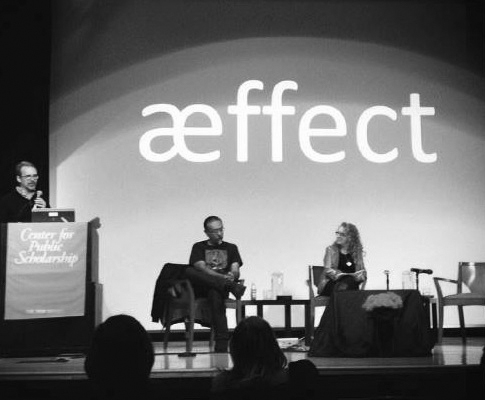Measuring the Impact of Artistic Activism
AKA “The Æffect Project”
In 2015 the C4AA teamed up with George Perlov, former VP of Research at the Ad Council, and currently with George Perlov Consulting, to study the æffect of artistic activism. What we’re looking for are answers to the question “Does Artistic Activism Work?” and what are the metrics we should use for measuring the practice?
To answer these questions we’ve designed a research project that will start from the bottom up: working with practicing artistic activists to develop appropriate measures of success.
PROJECT DESCRIPTION
Measuring the Impact of Artistic Activism
Background
Social change is hard. Over the years social issue campaigners and activists have employed a variety of marketing and communications efforts to attract public interest to their issues and causes to varying degrees of success. More recently, activists have turned to the arts for inspiration and as a way to engage audiences through deep and emotional connections to create more powerful and meaningful interactions. At the same time, more artists are imbuing their work with social and political messaging to advance the issues they feel most passionate about.
Now that there is a growing body of work in the field, as well as a host of different training programs available to artists and activists, there is an opportunity to develop common definitions, best practices and a generic working theory-of-change model for artistic activism programs. What we’re looking for are answers to the question “Do these practices work?” and what are the metrics we should use for measuring them?
Why study this?
Like any burgeoning field of social intervention practice, we need a common vocabulary, established practices, a shared understanding of how these efforts actually work (or don’t) and an appropriate metrics with which to evaluate success. We need the collective knowledge of leaders in the field to help codify what we believe to be true anecdotally. This knowledge will help not only help trainers and academics work more efficiently and collaboratively, but also provide a basic knowledge base to novice and experienced practitioners. It will also help to demonstrate the impact of this kind of work to a larger and more diverse group of funders to help them recognize these interventions as effective practices worthy of their investments.
Key Questions
Some of the key questions we expect that this initiative will address include:
- How have artistic activism projects changed attitudes, beliefs and behaviors of target audiences?
- What kind of practices have been most successful and why? What best practices can be documented?
- What sort of evaluative strategies do trainers and practitioners employ?
- What opportunities exist to expand, continue or sustain time and/or place-based interventions?
- What language do practitioners, trainers, academics and other use to describe interventions?
- Is there consensus on a generic Theory-Of-Change model for artistic activism?
- What metrics should be used for evaluating impact of these practices?
- What other needs exist currently in the field?
Proposed Methodology/Work Plan
We propose a multi-phase work plan that will help to answer these questions:
- Formation of an Advisory Committee – An advisory committee comprised of academics, practitioners, trainers and funders of artistic activism projects will be formed and convened over the project period to provide overall guidance, counsel and direction for the project.
- Literature Review – A literature review of any existing articles, reports, case studies and other documentation of artistic activism will be undertaken and findings summarized.
- Theory–Of-Change Model – Based on existing information and data, a generic Theory-Of-Change model for the field of artistic activism will be developed for Advisory Committee input and consensus building. We will also highlight potential metrics that could be used to measure impact for discussion.
- Stakeholder interviews – To complement the feedback received from the Advisory Committee, additional interviews on the state of the field will be conducted among additional stakeholders and experts to provide an expanded viewpoint on the field.
- Observation of training programs – The principal researcher will observe a few different training programs provided by different organizations to understand the various approaches, taxonomies and systems used to train newcomers to field.
- Analysis and recommendations – A digital report will be developed that synthesizes all of the learnings, discussions, the final Theory-Of-Change model developed, and other best practices from the field.
- Toolkits – Toolkits for both artists and activists will be developed so that they can incorporate the learning from this work into the art they create/programs they develop.
- Dissemination — The digital report and toolkits will be disseminated widely among the foundation, social marketing and artistic activism communities as well as among key bloggers in the field, and a plan will be developed for opportunities to present the findings and opportunities at conferences and meetings.



